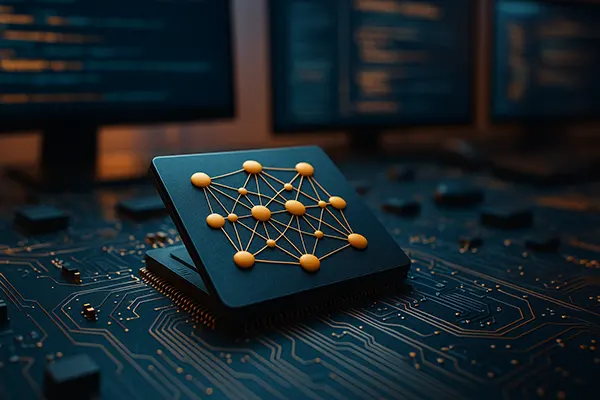
Neural Network Compiler: From Automatic Code Optimiser to Hardware Instruction Generator
The rapid advancement of artificial intelligence has transformed the way we approach computation and software design. Neural network compilers have emerged as the bridge between high-level AI frameworks and low-level hardware execution. They are redefining how code optimisation, hardware utilisation, and performance tuning are performed, enabling developers to achieve faster and more efficient AI workloads across diverse architectures.
The Rise of Neural Network Compilers
Traditional compilers were created to translate programming languages into machine code, focusing primarily on logical and arithmetic optimisation. However, neural networks introduced a new layer of complexity — mathematical graph structures, tensor operations, and non-linear transformations — that required an entirely new approach to compilation. The emergence of neural network compilers like TVM, Glow, and MLIR was a response to this need.
These modern systems analyse the entire computational graph of a neural network, identifying redundant operations and optimising them automatically. Instead of relying solely on developer-written optimisations, they learn from data and model behaviour, creating machine-specific code that maximises throughput while reducing latency. This results in a remarkable boost in performance, especially in inference tasks deployed on GPUs, TPUs, and custom accelerators.
Beyond software efficiency, neural network compilers also address portability. By generating intermediate representations, they enable the same neural network model to run efficiently on various devices — from powerful cloud GPUs to low-power mobile chips — without manual intervention. This capability is now indispensable in a world of heterogeneous computing.
Machine Learning Meets Compiler Design
The fusion of compiler technology and machine learning has created a paradigm shift. Compilers are no longer static translators but dynamic learning systems capable of self-optimisation. Using techniques such as reinforcement learning and Bayesian optimisation, they can determine the most efficient execution path for specific workloads.
For instance, frameworks like TensorRT or XLA employ neural optimisation strategies to fine-tune tensor operations based on real-time profiling. The compiler learns which layers can be fused, which kernels can be preloaded, and which data transfers can be minimised. As a result, models achieve significant speed-ups without sacrificing accuracy or precision.
This integration marks the beginning of autonomous compilation, where systems not only optimise code but also evolve their optimisation strategies. By analysing millions of code traces, neural compilers become progressively smarter, adjusting their behaviour to the hardware context and workload patterns automatically.
From Optimisation to Hardware Instruction Generation
While optimisation remains a cornerstone of neural compilers, their modern role extends beyond improving speed and memory efficiency. Today’s compilers are increasingly capable of generating low-level hardware instructions directly. This means they no longer depend entirely on generic backends but can design task-specific instruction sets tailored to neural workloads.
In hardware-centric AI design, this capability is invaluable. Compilers now create custom compute kernels for AI accelerators, generating binary instructions optimised for each layer of a neural network. This ensures that the hardware is utilised to its full potential, avoiding bottlenecks associated with general-purpose architectures. Such approaches are particularly visible in edge AI, where power and speed constraints demand maximum hardware efficiency.
Moreover, the evolution of compiler infrastructures such as MLIR (Multi-Level Intermediate Representation) allows developers to construct domain-specific compilation layers. These layers act as bridges between high-level graph optimisations and hardware-level instruction sets, facilitating a truly vertical integration of AI software and hardware ecosystems.
Hardware-Aware Neural Compilation
Neural compilers increasingly use hardware profiling to make decisions during code generation. This involves analysing cache behaviour, memory bandwidth, and instruction latency to design the most efficient scheduling and allocation strategies. In effect, compilers become hardware-aware systems capable of predicting and mitigating performance issues before they occur.
Recent innovations also include the use of machine learning to guide hardware mapping. Instead of static allocation, compilers learn optimal data flow paths for different neural network architectures. By combining knowledge of both software graphs and hardware specifications, they ensure that every component — from registers to pipelines — contributes to maximum efficiency.
These advances have profound implications for AI-driven industries. From autonomous vehicles to medical imaging and large language models, hardware-aware neural compilation is becoming the cornerstone of real-time, high-performance AI systems capable of running efficiently on diverse hardware configurations.

Future Prospects and Challenges
The evolution of neural compilers is far from complete. The future promises compilers that integrate even deeper with neural network training, closing the loop between model design, training, and deployment. Such systems could adapt model architectures dynamically, guided by performance data collected during compilation and execution.
However, this progress comes with challenges. The increasing complexity of hardware architectures demands more sophisticated intermediate representations and tighter integration between software and silicon. Additionally, the reliability and transparency of compiler-generated code must be ensured, especially in safety-critical applications such as autonomous driving or healthcare diagnostics.
Despite these hurdles, the field is advancing rapidly. Open-source initiatives, academic research, and industry collaboration are collectively shaping a new generation of intelligent compilers that not only understand neural networks but also participate in their optimisation and execution. This is not just an evolution in compiler design — it is a redefinition of computation itself.
Towards Fully Autonomous Compilation
Looking ahead, neural network compilers may evolve into self-sufficient agents capable of complete code lifecycle management. They could integrate model analysis, code synthesis, and hardware execution in one continuous pipeline. Such systems would make AI development more accessible while maintaining optimal efficiency across all layers of computation.
The concept of autonomous compilation aligns closely with the broader trend of AI self-improvement. As models generate and train new models, compilers too will become recursive learners — entities that enhance their own capabilities through continuous feedback and adaptation.
Ultimately, neural compilers represent one of the most transformative innovations in modern computing. They embody the convergence of artificial intelligence, software engineering, and hardware design — a triad that defines the technological frontier of the 21st century.


